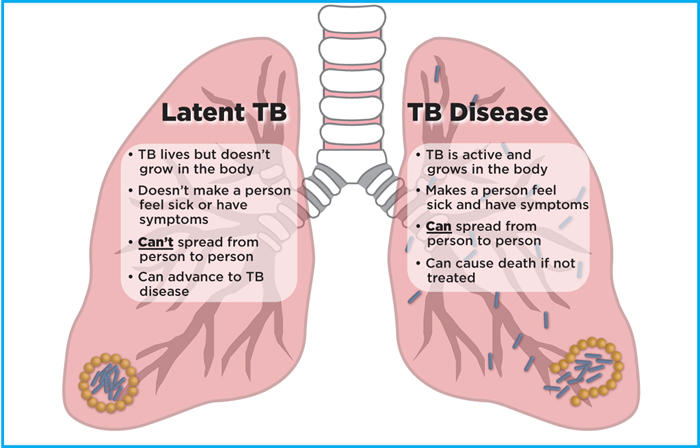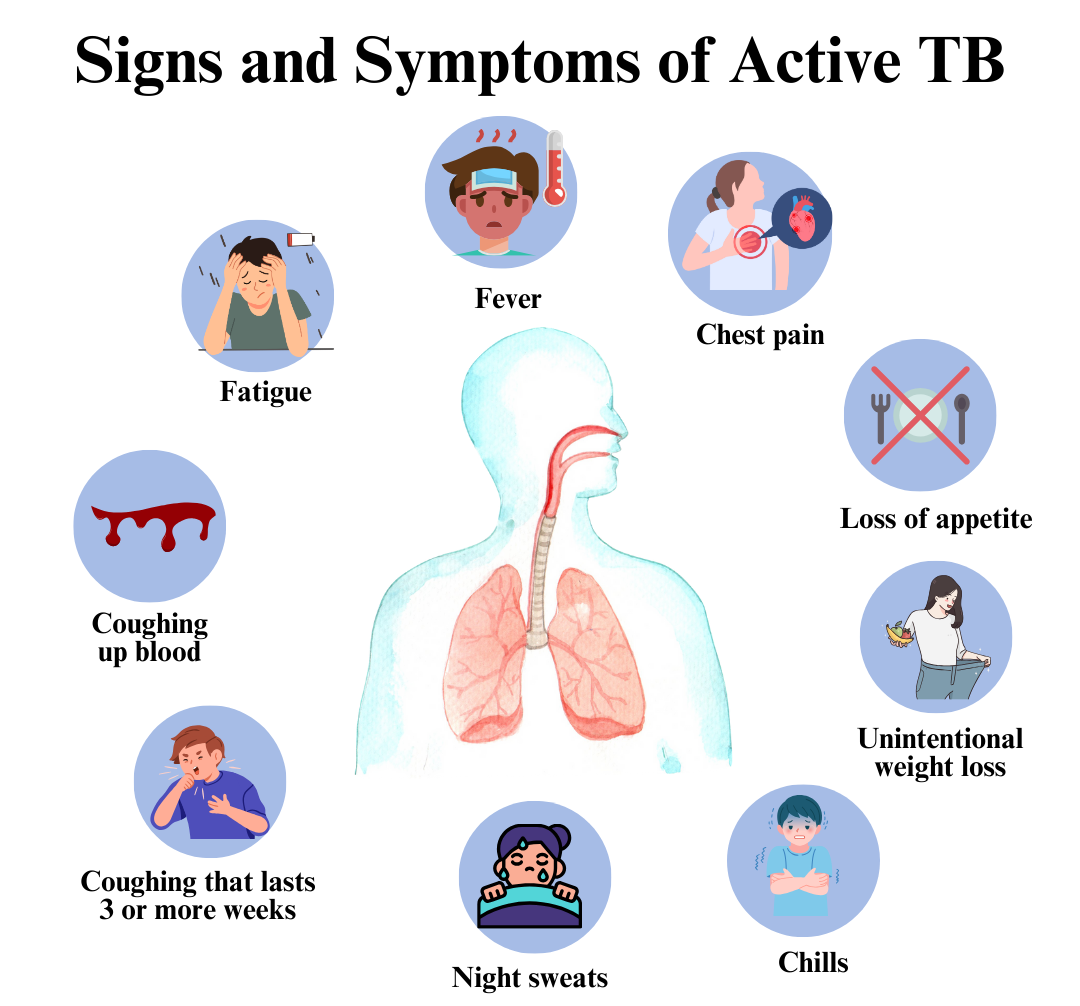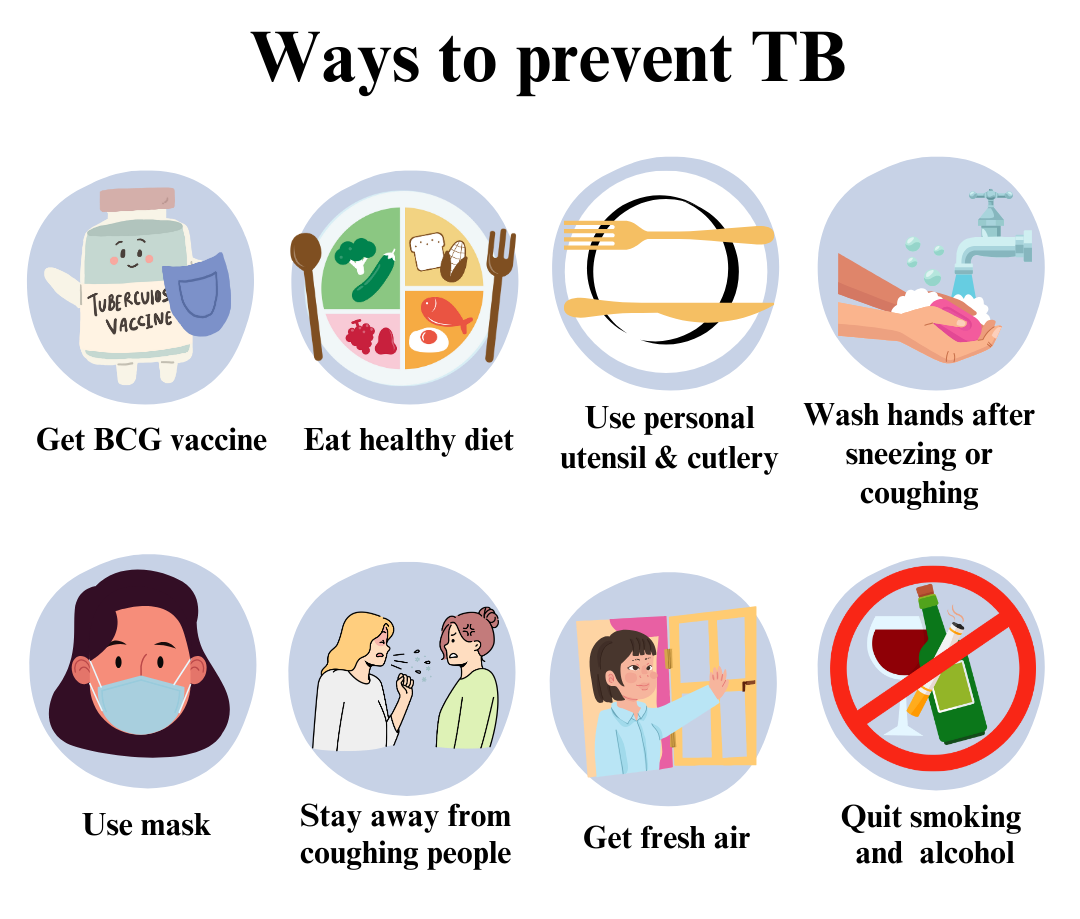
Tuberculosis (TB): Symptoms, Diagnosis, Treatment and Prevention
What is TB and Why you should know more:
Tuberculosis (TB) is the second leading killer disease in the world and India accounts for 27 % of the total TB cases worldwide. TB is an airborne bacterial infection primarily affecting the lungs but can also impact other organs such as the kidneys, spine, brain, lymph nodes, genitals, intestines and skin. It spreads through the air when an infected person coughs, sneezes or talks. Active TB is treatable but can cause serious complications if left untreated. One-third of the world's population carries the TB bacteria but it mostly lies dormant. This is called latent TB. Latent TB can become active when the immune capacity of the person is compromised leading to symptoms and high contagion rates.
In India, the BCG vaccine is given to infants soon after birth to build their immune systems to fight TB germs.

Harmful impact of TB:
As TB progresses, it can cause severe damage to the lungs and other organs, leading to respiratory failure, loss of weight and weakness, spinal deformities, kidney failure or meningitis. TB can also increase the risk of developing other infections such as AIDS due to a weakened immune system.
Symptoms of TB:
People with active TB may experience a combination of symptoms as shown in the chart. These symptoms can vary depending on the patient’s immune response.

Risk factors that cause TB:
Direct exposure to people infected with TB increases the chances of contagion, particularly for people with weak immune systems. Other risks are:
- Living or working in crowded or poorly ventilated environments
- Infants, young children and the elderly due to their weak immune systems, malnutrition or underweight conditions
- Individuals with autoimmune disorders or those undergoing chemotherapy or on immunosuppressive medicines
- Pre-existing health conditions such as diabetes, HIV/AIDS or other chronic illnesses such as severe kidney disease and cancer.
How is TB diagnosed:
After a comprehensive evaluation of your symptoms and physical examination for swollen lymph nodes, the physician may prescribe a combination of the following investigations and screening tests to diagnose or confirm TB:
- Blood and sputum tests
- Mantoux tuberculin skin test (TST)
- Chest X-ray or CT scan to look for irregular patches in the lungs
- Fine Needle Aspiration Cytology (FNAC) in cases of extrapulmonary TB.
- Nucleic Acid Amplification Tests (NAAT)
How to treat TB:
The treatment of TB involves drugs including antibiotics taken over several months. It is important to complete the entire course of prescribed medication to ensure the infection is fully eradicated and to prevent the development of drug-resistant strains of TB. The complete treatment may take six to nine months. Hospitalisation may be necessary for more severe cases of TB or for individuals who are unable to take oral medications. People infected with TB need a proper diet such as proteins (see the diet plan) fruits, vegetables and whole grains to boost their immune system and aid in recovery.
If infected, protect others:
- Stay home and isolate, spending minimal time with household members
- Ventilate living spaces by opening windows
- Wear masks (and encourage family members to do the same) over the mouth when sneezing or coughing. Dispose of used tissues properly.
- If you suspect any signs and symptoms, please consult a doctor immediately. Do not hesitate to seek help or contact your local health authorities or hospitals.
- Special Program in India: National TB Elimination Program (NTEP) in India is based on the internationally recommended Directly Observed Treatment Short-course (DOTS) strategy, which offers free diagnosis and treatment services across the country. You can reach out to your nearest health centre or hospital or visit the official (NTEP) website for assistance.

TB is treatable and by being proactive you can minimise the risk of contracting it. Ensure that you are vaccinated (see Adult Vaccination) particularly if you are in high-risk incidence areas.
 Back
Back